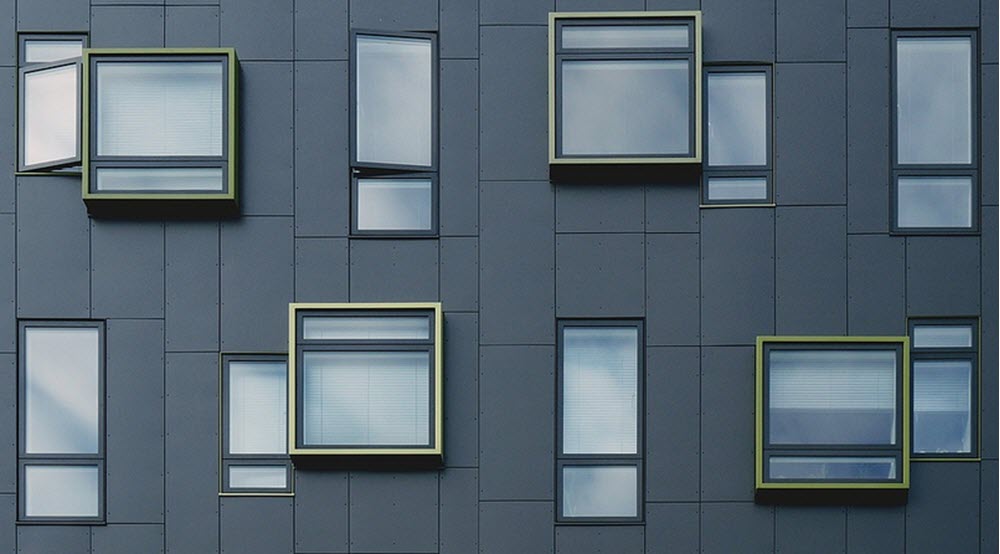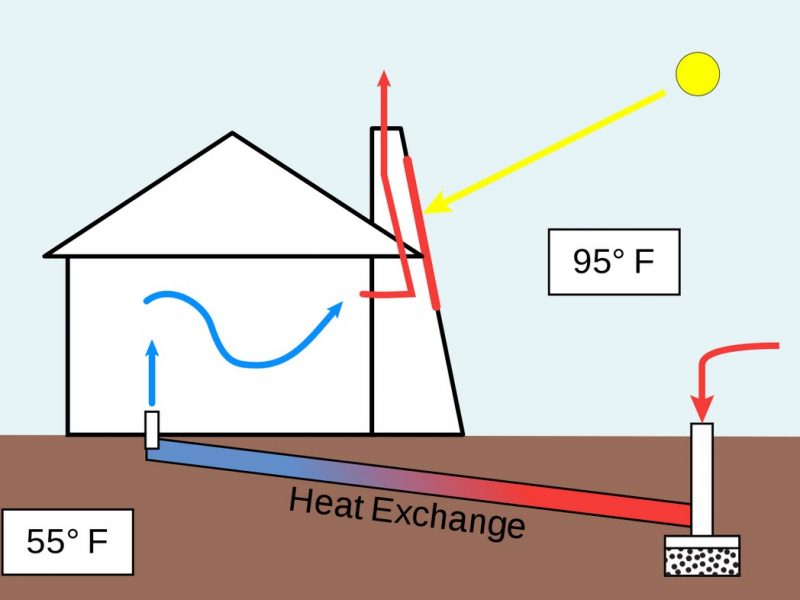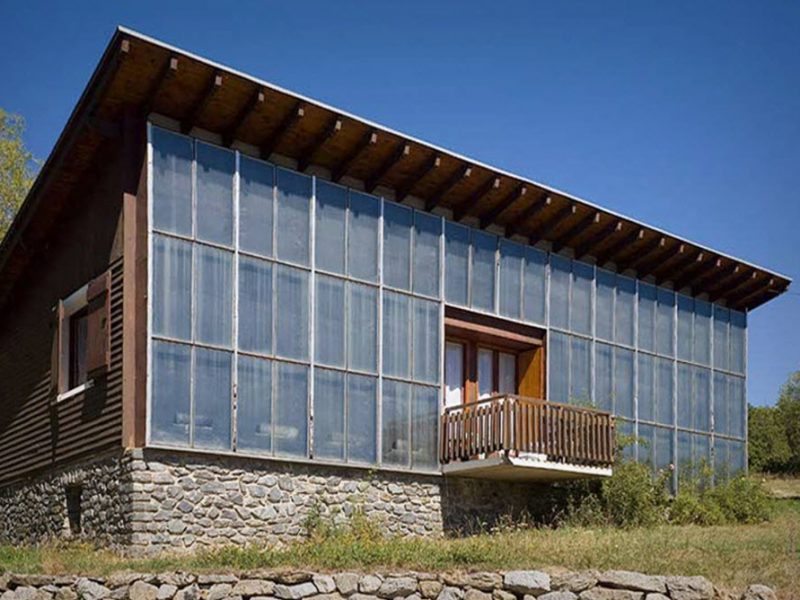Double glazed windows have two window panes separated by a space. This space is typically filled with argon or krypton, to boost the insulation ability of the window. Having two panes + gas instead of just one pane greatly reduces heat loss from buildings.
A triple glazed window work on the same principle, but with three panes of glass with gas in between. They are even better than double glazed windows for limiting heat loss and for reducing how much sound that will pass through the window.
A typical domestic building in the UK with single-pane windows will lose roughly 10% of its heat through the windows. This costs money, and can also result in cold-spots forming around the windows. If warm moisture-ladden air from other parts of the house reaches the colder window area, moist can be released from the air in the form of droplets. This results in problems with condensation and a higher risk of mould and rot.
Heat loss through radiation through a window is expressed by a U-value, which denotes the thermal transmittance of the window.
– The U-value for standard single-glaze windows is 5.6
– The U-value for standard double-glaze windows is 2.8
– The U-value for standard triple-glaze windows is 0.8
Terms
Double glazed and triple glazed windows are also known as insulated glazed windows (IG windows). The double glazed variety is called double-pane, and the triple glazed one is consequently a triple-pane window.
Background
Modern-style double glazed windows have been used in Scotland since at least the Victorian era, but didn´t really catch own on any major scale until the 1930s when they were popularized in cold parts of the United States. In the U.S., the inventor C.D. Haven launched his own version – The Thermopane – and helped consumers realize the heat-conserving benefits of double glazing.
Since double-glazing was (and still is) more expensive to purchase than single glaze windows, it became associated with high-end buildings, and this association still remains in many parts of the world.
In the United Kingdom, double-glazing didn´t really become popular until the 1970s, prompted by an increased interest in energy-saving devices and the introduction of cheaper materials for window frames (especially aluminium frames).

Noise reduction is a bonus
Double and triple glaze windows provide better noise insulation than single glaze windows. If you are interested in investing in windows that are good at reducing noise, you need to look at not just the number of panes but also the thickness or the panes, the gas and how the whole window is designed.
Having a lot of outside noise entering your home can be a source of stress and annoyance. It can make it hard to focus on important tasks during the day and getting adequate sleep at night. Scientific studies have even linked noisy home environments to health problems such as hypertension.
Different aspects of double and triple glaze windows
When you look at different double and triple glaze window solutions, here are a few key aspects to investigate:
– The glass
– The frame
– The pane spacers
– The gas between the panes
Many high-end double and triple glaze windows use a special type of glass with low-emissivity. Such glass panes offer a higher than standard insulation capacity, usually because they have been coated with metal oxide that reflects the long-wave heat energy of the home away from the pane. At the same time, this type of coating allows short-wave heat energy to pass through the glass to promote solar heat gain for the building.
The bar the separates the two or three panes of glass is called the pane spacer. In modern designs, it is normally filled with a desiccant that absorbs any moisture trapped in the space during manufacturing. This reduces the risk of condensation when it gets cold outside the window. Pane spacers are usually made from aluminium and foam (or some other thermal barrier).
The space between the panes is filled with a gas that is denser, heavier and more viscous than air. The gas decreases heat loss and lowers the risk of condensation problems. One of the most popular gas choices is argon, since argon is very capable of protecting metals from corrosion.
What frames can I use for double or triple glazing?
Three examples of commonly available materials are timber, aluminium and rigid pvc.
Timber
Timber have a natural and traditional appearance, and timber frames are often selected when the windows in an older building is updated with double or triple glazing. If you chose the right timber and care for it correctly, timber is also long-lasting.
Many home-owners like that timber is a renewable material, and the fact that timber has been used for windows since time immemorial. Timber also has great insulation properties.
Aluminium
Compared to timber, aluminium window frames require less maintenance. Aluminium is often selected for buildings where a sleek modern look is desired, although there are ways to make aluminium frames look great in an older building as well.
Aluminium is very resilient to corrosion, a property that can be especially important near the ocean or in cities where air pollution corrodes surfaces.
Aluminium is a material that can be recycled over and over again, although the process requires a lot of energy.
Rigid PVC (uPVC)
Rigid PVC is both durable and easy to care for, and also tends to cost less to purchase than timber frames and metal frames.
uPVC frames can be shaped in many different ways, which has made them popular in unconventional buildings and buildings where a window must be fitted into an irregular space, e.g. an old house where the window openings aren´t straight and symmetrical. It is possible to order uPVC frames with special foils that make them look more like old-fashioned timber windows.
uPVC frames insulate better than aluminium frames.



